In a California town called Cool, gentrification means a Dollar General store

COOL, Calif. — Pondering the future of this blip of a Gold Rush town in the Sierra Nevada foothills, Carolyn Loomis leaned on a well-worn line about its name.
“I want Cool to stay cool,” she said.
And what isn’t cool, in her opinion, is for a Dollar General store to move into the heart of Cool, population 3,900.
Buoyed by American families tightening their spending during the Great Recession, Tennessee-based Dollar General Corp. has thrived in recent years. The retailer has aggressively targeted withering rural communities overlooked by major retailers like Walmart, and its plain, boxy stores now outnumber McDonald’s restaurants in the United States.
Townspeople like Loomis, a 76-year-old retired teacher, fear the chain could ring up the end for mom-and-pop businesses.
In fast-changing neighborhoods in California’s urban enclaves, battles over gentrification and community identity have centered on more bourgeois newcomers: vegan restaurants in Silver Lake, art galleries in Boyle Heights, pricey new apartment complexes in South Los Angeles.
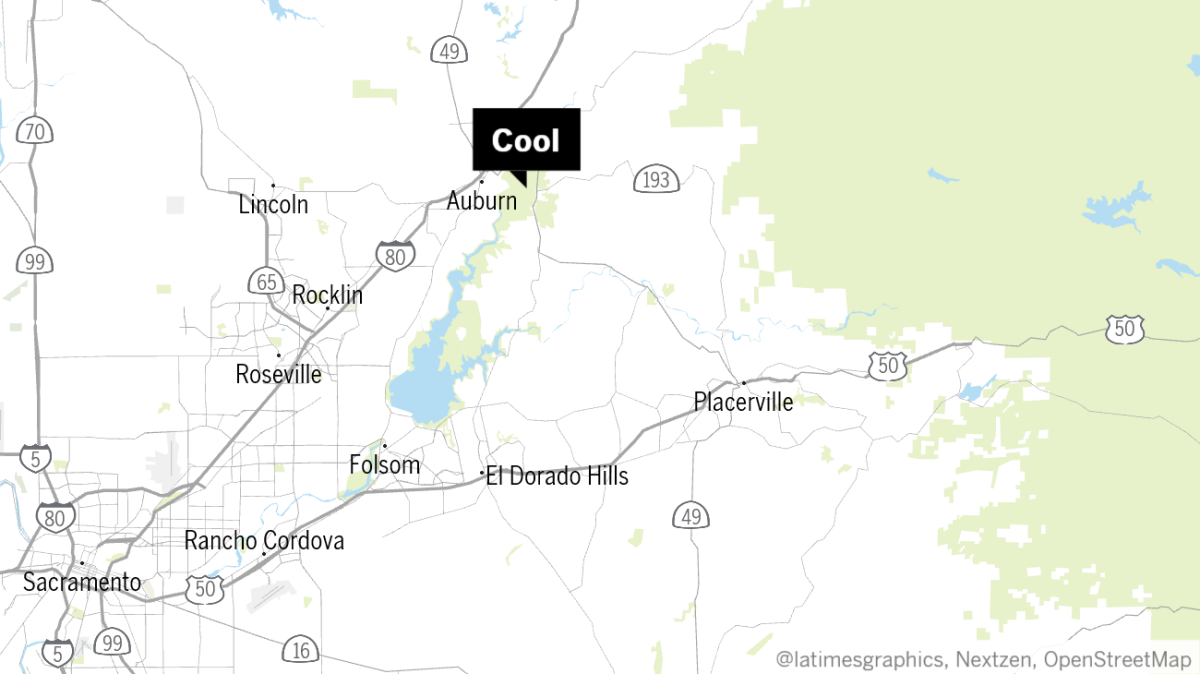
In Cool, the specter of gentrification takes the form of a far-from-hip retailer known for deals like three-for-$5 boxes of Cheez-Its. Residents worry that a Dollar General would create traffic gridlock in a town so small its residents brag that there is no need for street lights.
“This is about preserving rural America,” said resident Susan Yewell, 74. “We feel vulnerable. We don’t want big-box stores to come in because the beauty of the place is more important to us than buying some cheaply built something.”
Another cause for concern among Cool residents: more than 200 proposed new campsites at the adjacent Auburn State Recreation Area, which could bring tens of thousands more people traipsing through this ridge-top El Dorado County town every year, raising fears of a catastrophic wildfire.
An hour’s drive northeast of Sacramento, the unincorporated town — named, according to local lore, for an itinerant Gold Rush-era preacher named Peter Cool — is known mostly for endurance competitions like the Way Too Cool 50K Endurance Run and the Tevis Cup 100-mile horse ride. A sign on the edge of town tells visitors to “Have a Cool day!”
This year, a small group of local activists revived a long-defunct community group, the Cool-Pilot Hill Advisory Committee, to discuss ways to fight the proposed Dollar General and campsites. The group had been dormant for about two decades — ever since it beat down a plan for a major residential development.
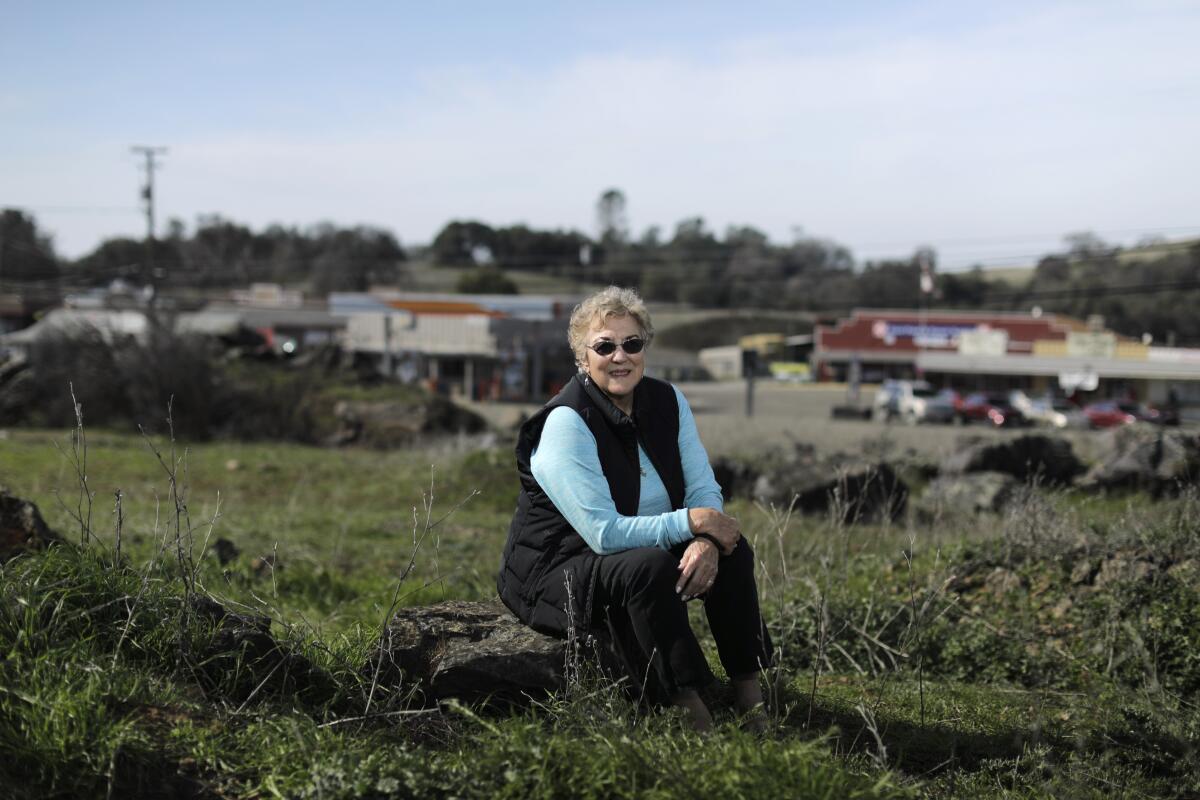
At a meeting last month in the Holiday Market grocery store, Loomis pointed to a mural depicting the nearby American River, with gold miners clutching pans and modern-day hikers and mountain bikers.
“That’s us then and us now,” she said. “I don’t see a Dollar General!”
Dollar General anticipates making a final decision on whether to open a store in Cool this spring, said Mary Kathryn Colbert, a company spokeswoman.
“Our customers are at the center of all that we do, and meeting customers’ needs is Dollar General’s top priority when choosing store locations,” Colbert said in an email. A Cool store would employ between six and 10 people.
As of November, there were nearly 16,100 Dollar General stores nationwide, including about 200 in California, Colbert said. In December, the company announced that it planned to open 1,000 new stores in 2020.
“There’s a significant portion of the rural population that see Dollar General as a good thing,” said David Procter, director of the Rural Grocery Initiative at Kansas State University. “The pro-Dollar General people say businesses in small towns are closing all over the U.S., that these towns are literally dying, and you have a business that wants to come in and wants to build and hire people and pay taxes and would be a sign of growth for your town, and why wouldn’t you want that?”
Most towns that have tried to put up a fight have been unsuccessful, he said.
El Dorado County Supervisor Lori Parlin said she believes Dollar General’s “business model is to use their mass purchasing power to undercut the prices of competitors, which makes it difficult for mom-and-pop stores to compete.”
When she was running for office in 2018, Parlin touted her support of residents who successfully fought a proposed Dollar General in unincorporated Georgetown, a Gold Rush hamlet 12 miles east of Cool. That entire town is a California historic landmark, a designation that helped locals who sued the developer and county, saying the store would destroy the character of Georgetown.
But in Cool, residents have not been able to find a policy that could be used to stop the project, which would be built on property zoned for commercial development, Parlin said.
At the meeting of the Cool-Pilot Hill Advisory Committee, Aloha Adams, 82, urged attendees to contact county officials and relay concerns about issues like traffic congestion, an overtaxing of the town’s water supply and competition with local businesses.
“We have to get past ‘We don’t want the damn thing’ and give them the reasons,” she said.
Adams attended a one-room schoolhouse in Cool in the 1940s. She cherishes memories of those simpler times, when the teacher would take students outside to pick wildflowers. Back then, Cool didn’t even have a stop sign.
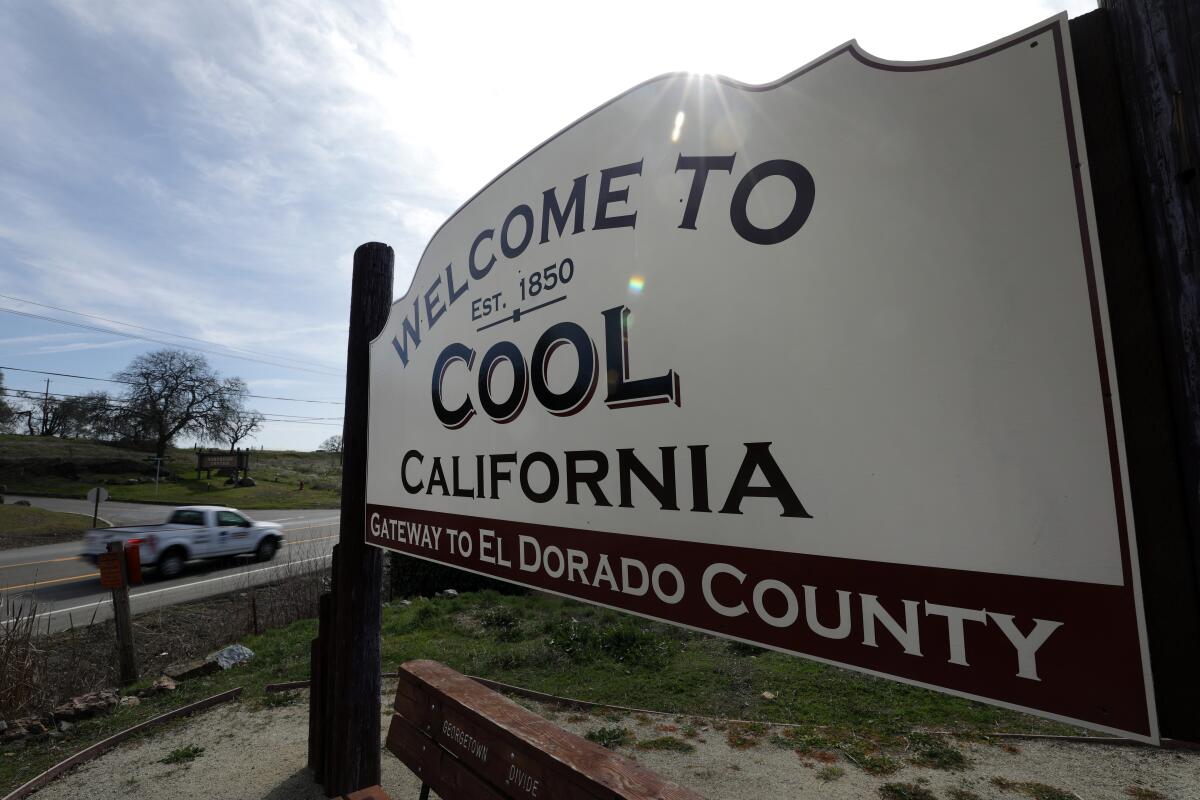
At Cool Florist and Gifts, the shelves were stacked high with Cool-themed tchotchkes, locally made salsas and jams, and T-shirts that owner Rosie Borba, 73, screen-printed herself.
Borba’s shop is across the street from the site of the proposed Dollar General, which, she fears, would drive her out of business.
She opened her store 20 years ago. She knows most of her customers and has provided free flower arrangements to grieving families who can’t afford them. Borba raised her two children here, embracing the slow, small-town lifestyle alongside people who don’t lock their doors and lean on each other in good times and bad. All that feels like it’s slipping away, she said.
“It’s so different up here,” Borba said. “It’s like life should be.”
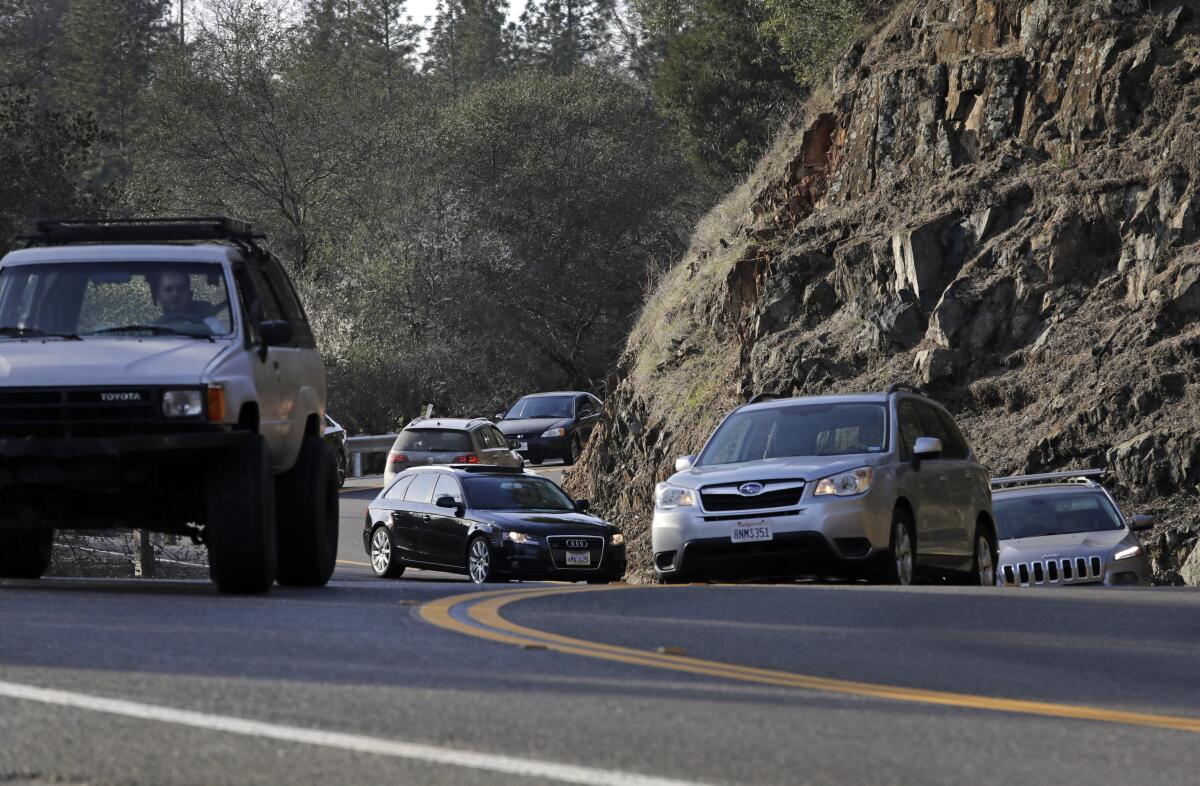
Borba and others say the ridge-top town’s infrastructure cannot accommodate a large influx of people. They also worry about a proposal by California State Parks and the United States Bureau of Reclamation to add up to 235 individual and five group campsites to the Auburn State Recreation Area.
Cool is seven miles east of Auburn, population 14,000, which lies across the recreation area. The towns are connected by the two-lane Highway 49, a slow, steep drive with hairpin curves that hang over the American River canyon. That dangerous stretch and the two-lane Highway 193 are Cool’s main evacuation routes in case of wildfire or other calamity.
The California Department of Forestry and Fire Protection has given much of the Auburn State Recreation Area, with its steep canyons and rugged terrain, its most extreme fire danger rating. Cool residents say more campsites would increase the fire risk.
“We’re not anti-development,” said Curt Kruger, a member of the American River Community Coalition, a group of residents fighting the project. “What we are opposed to are things that will kill us.”
He ticked off recent, deadly wildfires: the Camp fire in Paradise, the Tubbs fire in Santa Rosa and the Carr fire in Redding.

“These were once-in-a-generation events, and they have all happened in the last three years,” he said. “More people are living [in] and going into forested areas, and that equals more people at risk of starting fires.”
In a statement, California State Parks said visitation to the 30,000-acre Auburn State Recreation Area has increased by about 400% over the last three decades. The area currently has 36 campsites; the plan to add more, which has not been finalized, is an attempt to manage that growth.
State Parks and the Bureau of Reclamation “understand that some nearby communities may have concerns about wildfires, but it is important to note that most of the wildfires that started in the recreation area over the last several decades were caused by fireworks, illegal campfires or other similar activities away from developed campgrounds and day-use areas,” the statement says.
Residents say that home values have plummeted and that insurers recently hiked or canceled some homeowner policies, citing fire risk and proximity to campsites. (In December, California temporarily banned insurers from dropping policies in several wildfire-hit areas; El Dorado County was not included.)
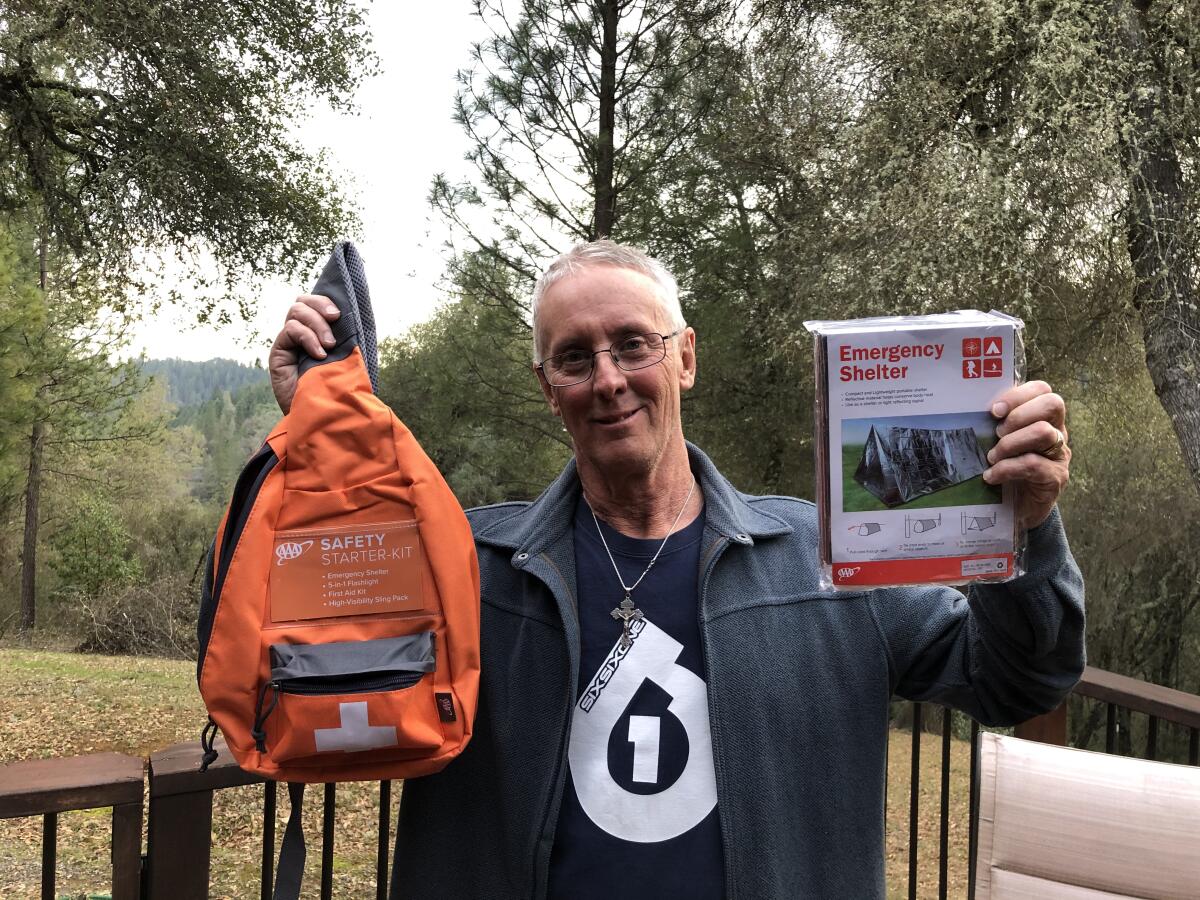
Lorna Dobrovolny, a former State Parks employee who lives in Cool, said the town is feeling the strain of population growth in nearby Sacramento and its suburbs. In 2018, Sacramento had the largest percentage gain in population among California’s 10 biggest cities, with 1.5% growth, or 7,400 new residents, according to state figures.
For those urbanites, Dobrovolny said, Cool and the Auburn State Recreation Area are an easy jaunt to “the boonies” — and now the boonies are getting too crowded.
“You can’t invite more people in until you do something to reduce the fire danger,” she said.
Back at Cool Florist and Gifts, Borba said the town could not handle a huge increase in campers, who, she said, probably wouldn’t help the local economy because they “bring their own stuff.”
Adding to the danger of a possible fire or even a snake bite at those new campsites, she said, is the fact that Cool has no hospital or urgent care facility.
“Those are things we need,” she said. “Not a Dollar General.”
More to Read
Sign up for Essential California
The most important California stories and recommendations in your inbox every morning.
You may occasionally receive promotional content from the Los Angeles Times.











